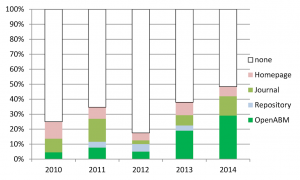In a few weeks world leaders, NGOs and scientists gather in Copenhagen for the UN Climate Change conference. Already is clear the no effective agreement will be signed. One may get quite depressed by the inability of world leaders to come to an agreement on such an important policy problem during the last 15 years. But what if they would make an agreement. Will a signature change the way people make decisions and use energy? What will happen with those who do not follow the agreement? Although top-down policy may be perceived as effectient, we may doubt whether they are effective.
Besides trying to make agreements at the global level, we should focus more on bottom-up opportunities. Thomas Dietz et al. show that in 10 years time more than 7% of US emissions can be reduced if we put more effort in stimulating adaoption of new technologies. There are many local initiatives which we need to stimulate, such as a carbon tax in British Colombia, and one of my neighbors has solar power now and put a sign in her garden: Solar Power? We did!
There are many opportunities at local and regional levels which lead to reduction of emissions and are beneficial for local populations: independence of energy, health benefits due to more exercises and local food products, clean air, etc. Such local initiatives tailored to the local conditions may stimulate a larger movement to derive coordination and support from the federal level. Many communities may experience that climate policy is beneficial anyway since it lead to cleaner air and less dependence of energy.
Hence a policentric perspective of climate change policy is needed with more explicit focus on local initiatives and innovation than current policies.









